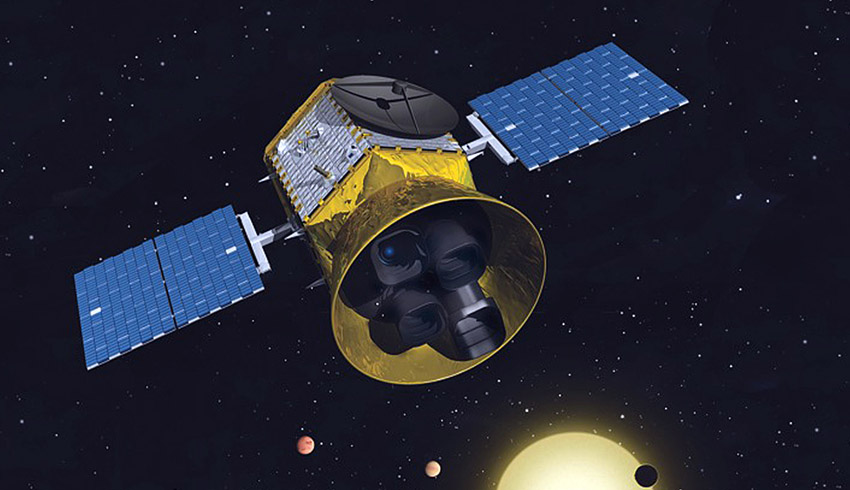For more than a decade, astronomers have searched for planets orbiting AU Microscopii (AU Mic), a young nearby star still surrounded by a disk of debris left over from its formation.
NASA officially announced the find of the new planet, AU Mic b, was confirmed using data from NASA’s Transiting Exoplanet Survey Satellite (TESS). MINERVA-Australis at the University of Southern Queensland’s Mount Kent Observatory is the only southern hemisphere site fully dedicated TESS support.
The AU Mic system is centred on cool red dwarf star, which is about 20 to 30 million years old - a stellar infant compared to the sun, which is at least 150 times older.
When a planet crosses in front of its star from our perspective, an event called a transit, it causes a distinct dip in the star’s brightness. TESS monitors large swaths of the sky for 27 days at a time, watching thousands of stars at once, looking for these tiny dips.
When TESS identifies a star with a potential planet, scientists across the globe, including a team of astronomers based in Toowoomba, leap into action.
Those astronomers point their own telescopes, taking special measurements to determine if it is “wobbling” back and forth in space. Once a planet is confirmed, these observations can also help scientists learn more about that alien world.
Professor Jonti Horner said, "We’re proud that the University of Southern Queensland is an important member of a global team hunting for exoplanets. From Mount Kent in Queensland’s Darling Downs, astronomers are working with institutes around the world to confirm the existence of planets and learn more about them."
AU Mic has long intrigued astronomers as a possible home for planets thanks to its proximity, youth and bright debris disk. It is a nearby ‘laboratory’ for understanding the formation and evolution of stars and planets that will be studied for decades to come.
MINERVA-Australis is funded by the university, as well as Australian Research Council and international partners (Massachusetts Institute of Technology (MIT), George Mason University, University of Louisville, University of Florida, University of Texas, University of California, Riverside, and Nanjing University).
"In fact, you can expect more University of Southern Queensland research papers in the coming weeks stemming from this fascinating system,” Professor Horner added.
TESS is a NASA Astrophysics Explorer mission led and operated by MIT and managed by NASA's Goddard Space Flight Center. More than a dozen universities, research institutes and observatories worldwide are participants in the mission.
Recently decommissioned multipurpose infrared observatory Spitzer was also used to confirmed the existence of AU Mic b. It was managed by NASA's Jet Propulsion Laboratory for the agency's Science Mission Directorate.

